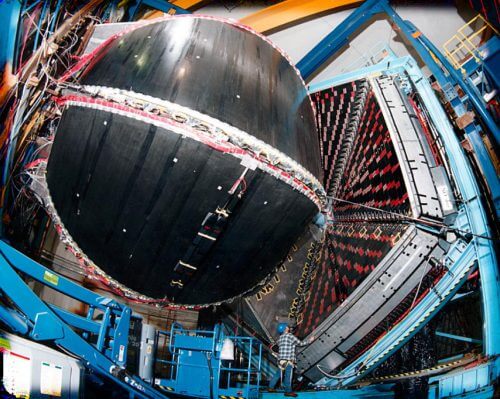Tel Aviv University researchers discovered that the speed of movement of the protons in the nucleus is higher than previously thought; The discovery has great significance, among other things, for the study of neutron stars, which are considered the densest stars in the universe; The study was published last night (Monday) in the journal Nature

"The matter in our world, starting with our body and ending with the stars in the sky, is made up of atoms; And every atom consists of a nucleus containing protons and neutrons (together known as nucleons), and the electrons that are floating around it," says Prof. Eli Pisetsky from the School of Physics and Astronomy at Tel Aviv University, who led the research. "Therefore, every discovery concerning the atomic nucleus is significant, in one way or another, for understanding the entire universe."
The current discovery, which refers to the speed of movement of particles within the atomic nucleus, is an important contribution, among other things, to the study of neutron stars - the densest stars in the universe, which are apparently related to the production of the heavy elements in our world. The research was carried out by the researcher Mital Duar from Prof. Pisecki's laboratory, with the participation of researchers from MIT and ODU University in Virginia, USA.
To examine what happens inside the nucleus of the atom, scientists use particle accelerators. The accelerator produces a beam of high-energy particles, and uses it to 'bomb' the nucleus until it disintegrates. The decay products are measured using highly sensitive detectors, and the findings allow researchers to reconstruct the event, and draw conclusions about the structure of the nucleus and what happens inside it. The current research was carried out at the Jefferson Electron Accelerator Laboratory in Virginia, USA.
"It is known that the protons and neutrons (nucleons) move inside the nucleus," explains Prof. Pisecki. "For the most part, each nucleon moves alone, but we discovered in previous studies that sometimes they form pairs. These pairs almost always consist of a proton and a neutron. We also found that when a pair is formed, each nucleon in the pair moves at a much higher speed than the speed of a single nucleon. The speed of a nucleon in such a pair reaches more than half the speed of light."
In the current study, the researchers chose to observe atomic nuclei of heavy substances, such as lead. "In heavy nuclei, the number of neutrons is significantly higher than the number of protons," says Prof. Pisecki. The reason: because protons have a positive electric charge, they repel each other, and it is difficult to bind a large number of protons together into a stable nucleus. Neutrons, on the other hand, have no electric charge, and a larger number can be "packed" relatively easily. Therefore, in the nucleus of a lead atom, for example, there are 126 neutrons, and only 82 protons.
Apparently, in a situation where there are many more neutrons, there is a greater chance of the formation of pairs of neutrons. But the researchers found that despite this, the vast majority of pairs consist of a proton and a neutron. "It is similar to a party where there are 1.5 times more men (neutrons) than women (protons)," explains Prof. Pisecki. "In such a situation, women have a much greater chance of dancing with a partner, or in other words: at any given moment, the percentage of protons conjugated to pairs is higher than the percentage of neutrons found in pairs. And since the particles in the pair have a higher speed, the proportion of protons with increased kinetic energy is higher than the proportion of neutrons with increased kinetic energy. This discovery may cause an important change in the accepted models of neutron stars: to our understanding, every neutron star also has a small percentage of protons, and their movement in the star will be affected by the neutrons close to them, as happens in nuclei."
In addition, the researchers examined the significance of the discovery for the particles known as quarks - the building blocks of which neutrons and protons are composed. The results of this study concerning the movement of quarks within pairs of close nucleons will be published soon.
"Our research is a study of basic science, without immediate applications," Prof. Pisecki concludes. "But since the entire universe is made up of the particles we study, our findings have great significance for understanding the world we live in, starting at the most fundamental level."
More of the topic in Hayadan:

3 תגובות
at such a high speed of half the speed of light. What is the force that prevents the atom from disintegrating? Is the direction of movement rotational, then a huge angular momentum is created here. The situation is not clear, I would appreciate it if someone updated the issue.
Good Day
Yehuda
Is it possible to measure the speed of protons and proton-neutron pairs according to the changes in the valve due to the movement in relativistic speed?
We also found that when a pair is formed, each nucleon in the pair moves at a much higher speed than the speed of a single nucleon.